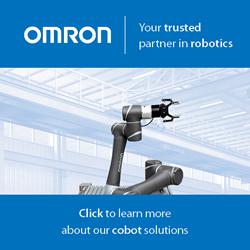Super Smart Society: Society 5.0
Swarms of Robots Manage to Not Run Into Each Other
LG Electronics To "Aggressively Invest" In Robotics
18 Questions to Ask Your AGV (Automated Guided Vehicle) Vendor:
Part 2
Sony company chief hints at company's plans to head into robotics and AI
The ABC of RPA, Part 10: At What Point Should I Also Consider Bringing Artificial Intelligence Into The Office Environment?
The First Autonomous, Entirely Soft Robot
Dexmo Robotics has created a mechanical exoskeleton glove for VR use
The ABC of RPA, Part 9: How Do I Measure Performance of a Robot Versus Humans?
AMAZON HAS BEGUN TESTING DRONES AT THIS ENGLISH FARM
Robot Octopus Points the Way to Soft Robotics With Eight Wiggly Arms
NASA's new $1 million Space Robotics Challenge to prepare robots for Mars journey
The ABC of RPA, Part 8: Can robots and humans work in harmony?
Insect-Sized Drone Will Spy On Terrorists
Is That Drone a Weapon?
Records 916 to 930 of 1195
First | Previous | Next | Last
Featured Product

